Plantain salve is an easy-to-make herbal remedy that works wonders to soothe a variety of skin ailments, particularly itchy skin. Plantain herb is easy to find, forage, and use in this simple and accessible salve recipe!
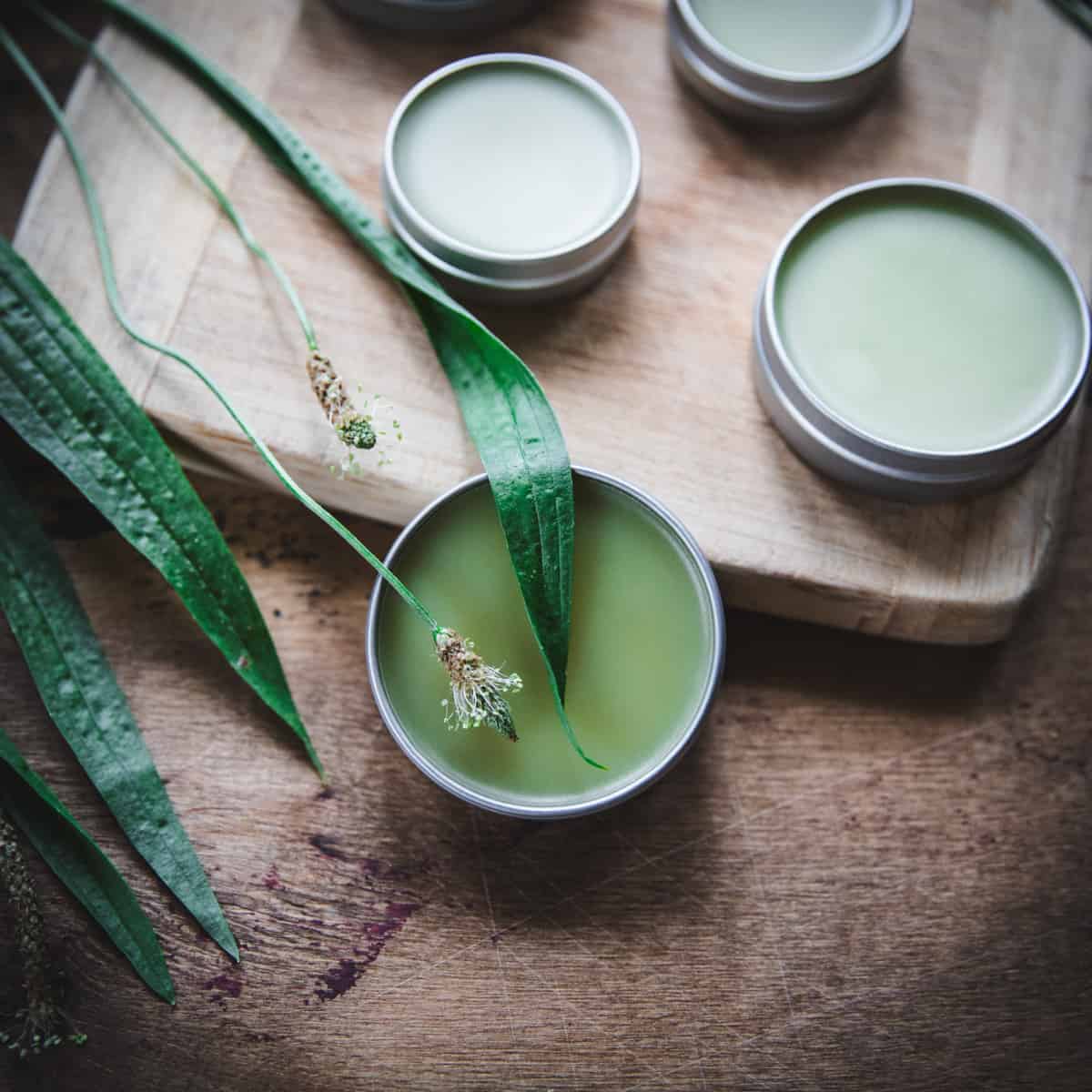
Want to save this post for later?
About Plantain
While often seen as a common weed, the plantain plant is actually an amazingly useful herb that is extremely soothing to the skin.
Plantain has a long history as a healing plant and is widely known among herbalists as “nature’s band-aid.” It is edible and medicinal, and its soothing powers should not be dismissed!
Growing readily and widely, especially in the summertime, plantain is hardy and really easy to forage for. There are two main types of plantain, broadleaf, and narrow leaf.
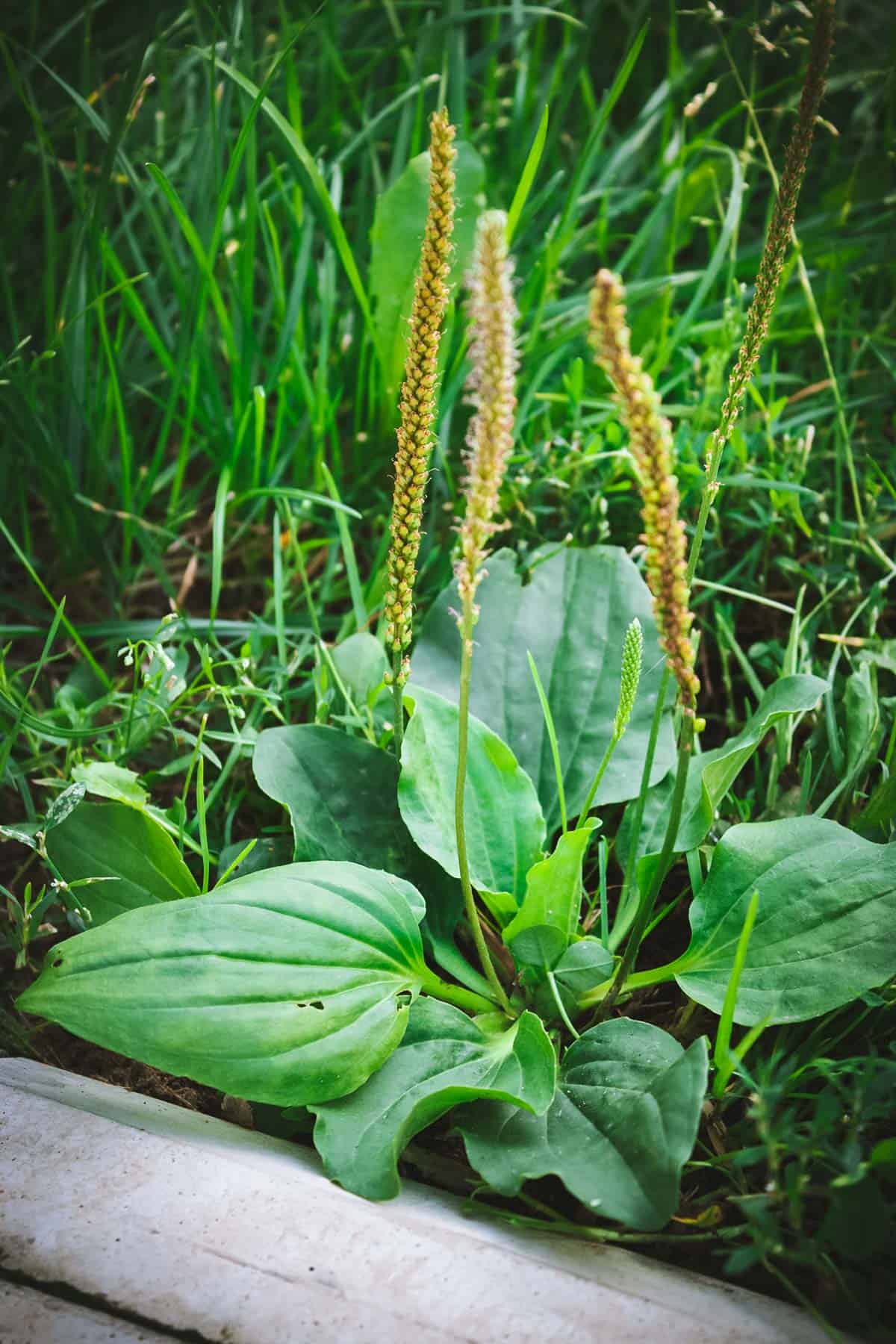
I used narrow-leaf plantain as that is what we have growing in our yard, but either type is useful, and both work in this recipe. So use what you find or have at hand!
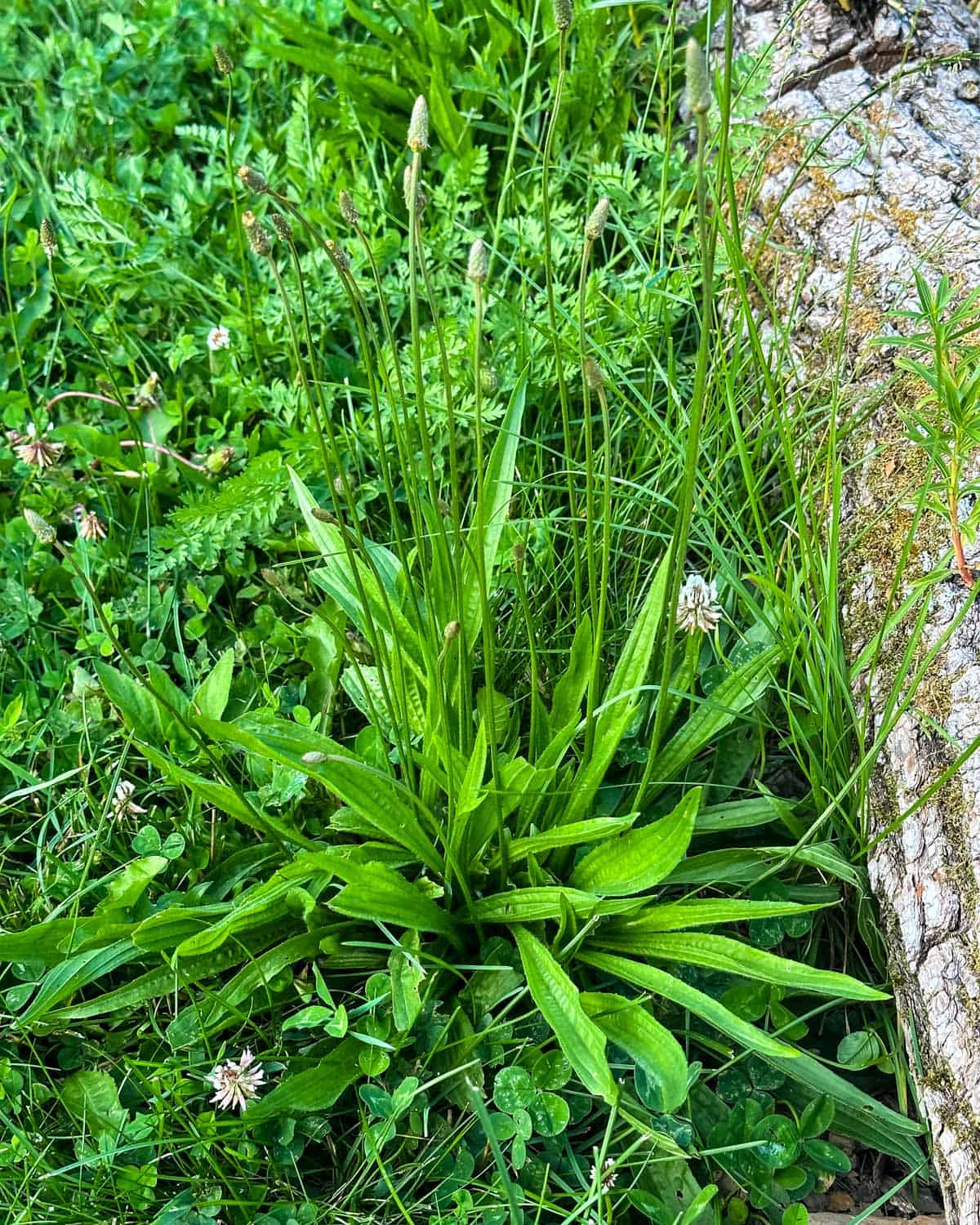
Plantain Benefits
The plantain plant has a long list of benefits and has both internal and external uses. Today we will focus on plantain uses for the skin since we are making a salve.
Plantain has antibacterial, antimicrobial, anti-inflammatory, and astringent properties, so it works well for a variety of common skin ailments.
Plantain leaves are highly effective at helping to heal minor wounds, cuts, scrapes, and burns. They are a perfect addition to homemade salves and balms such as this plantain salve or my herbal healing salve.
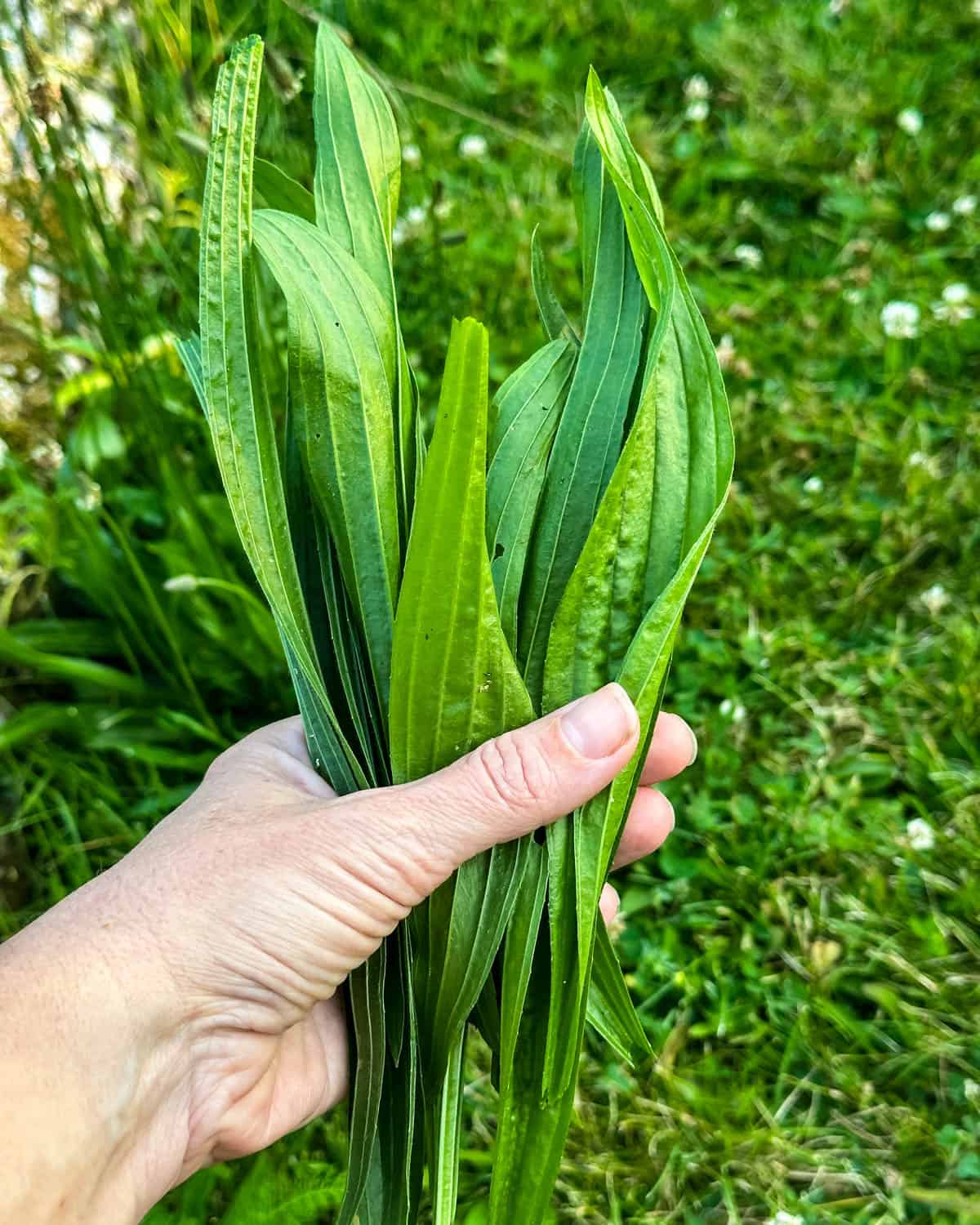
How to Make Plantain Salve
Ingredients
Dried plantain leaves: Plantain you have foraged and dried is great, but if you can’t find any you can always buy dried plantain leaf from Mountain Rose Herbs (my favorite place to buy high-quality, organic herbs).
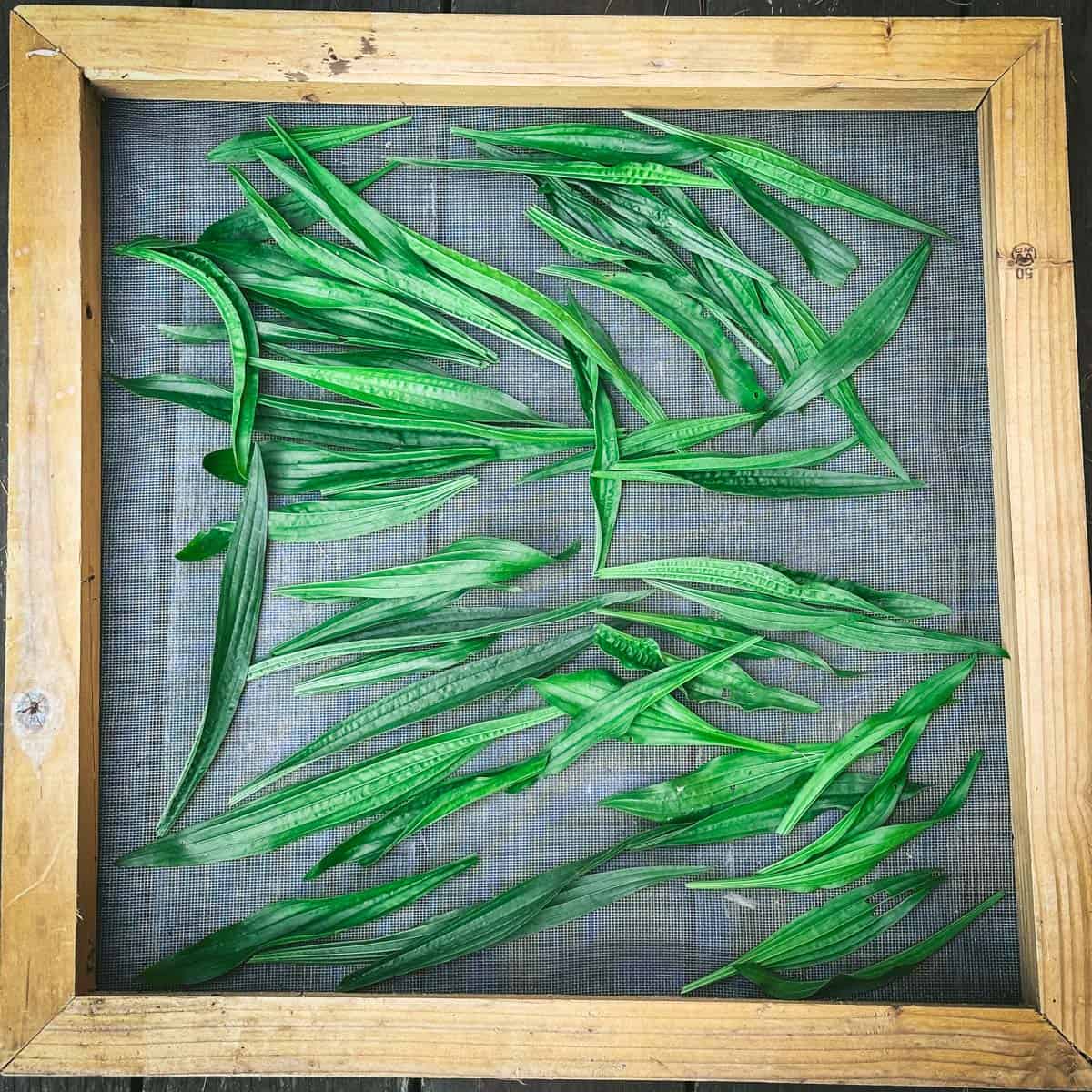
Carrier oil: Olive oil is a great choice as a carrier oil and is easy to find. I often use a blend of about 50% olive oil, 25% coconut oil, and 25% sweet almond oil. Each oil has its own benefits and it’s really up to you which ones you’d like to use.
Beeswax: I buy this beeswax from Mountain Rose Herbs.
Make the Infused Plantain Herb Oil
To infuse the oil, first add the dried plantain leaves into the jar until it is about halfway full. Then fill the jar with a carrier oil (or a blend of oils) to cover the plants.
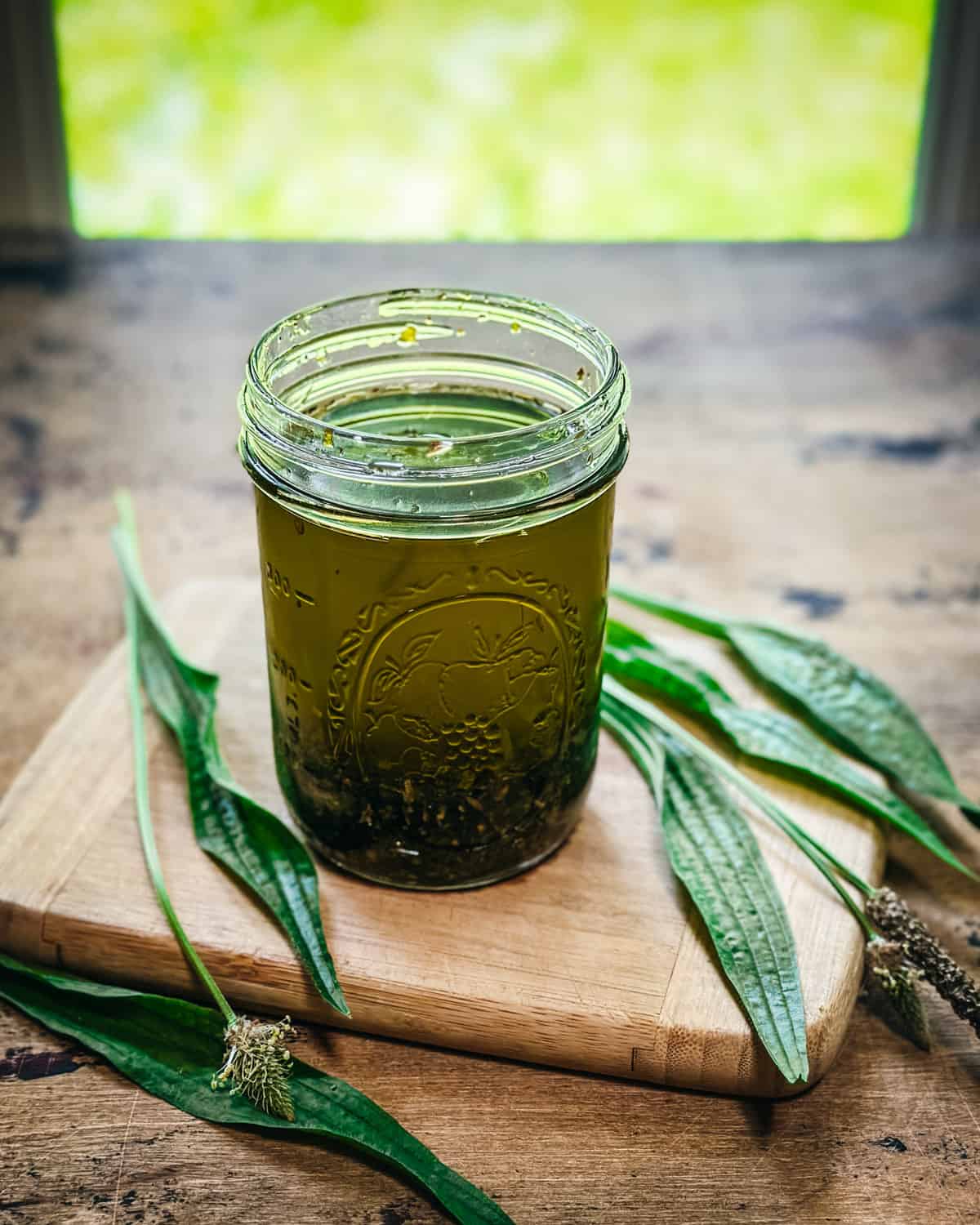
Then cap the jar with a lid and let the oil infuse for at least 4-6 weeks, more time is ok too. Make sure to store it in a cool spot away from direct sunlight while it is infusing.
Usually, a pantry or a dark counter corner works well for storing oil infusions.
Once the plantain oil is fully infused, strain out the leaves from the oil. I like to use a fine mesh sieve lined with cheesecloth so I can squeeze the remaining oil out of the plantain leaves in the cheesecloth.
Gotta get all the plantain plant goodness!
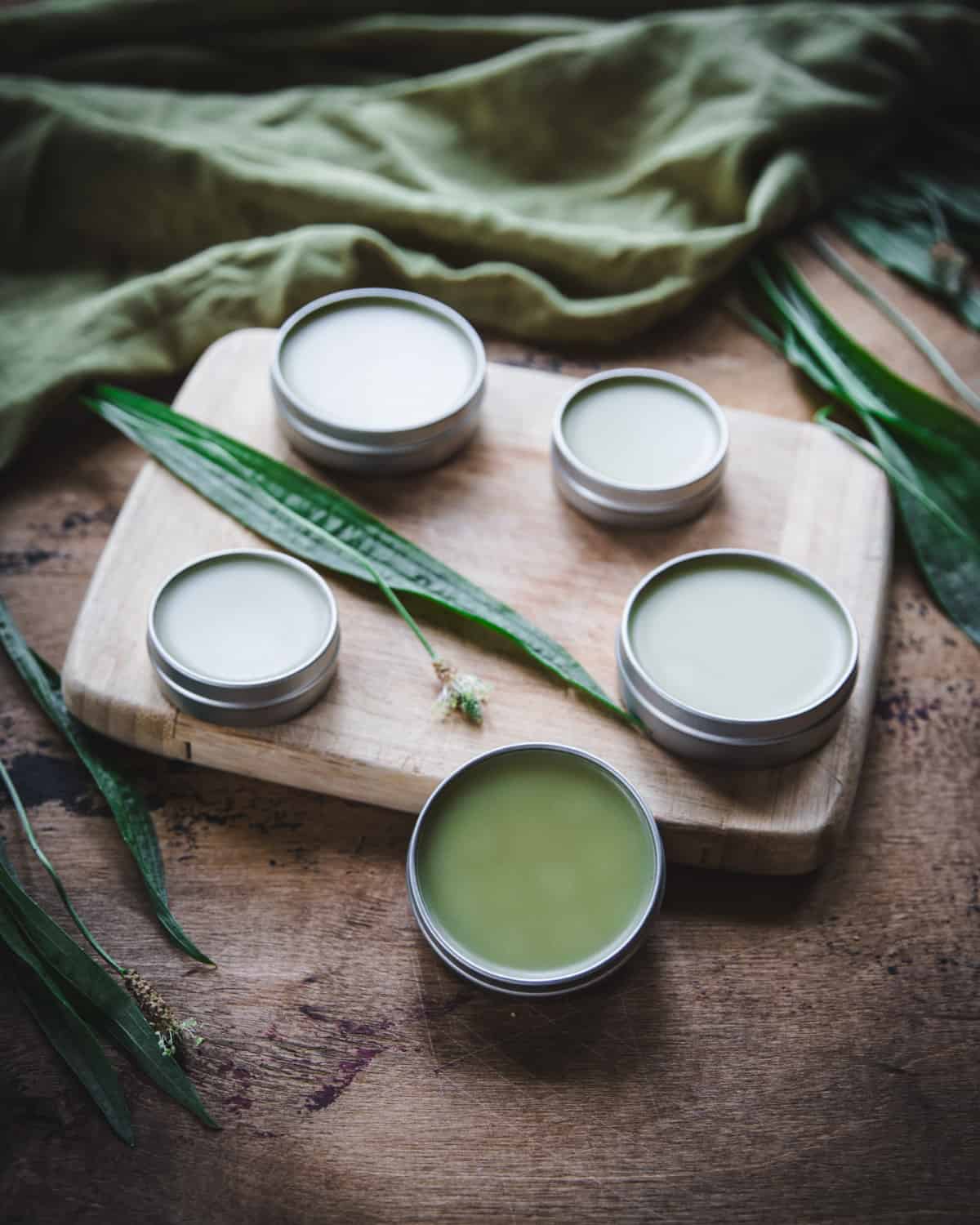
Make the Plantain Salve
First, heat the plantain-infused oil in a double boiler on your stove. If needed, you can create a makeshift double boiler by putting a small bowl or a glass Pyrex measuring cup over a pot with about an inch of simmering water.
Add the beeswax to the infused oil and stir occasionally. I like to use a bamboo skewer or chopstick for stirring until the beeswax completely dissolves into the oil.
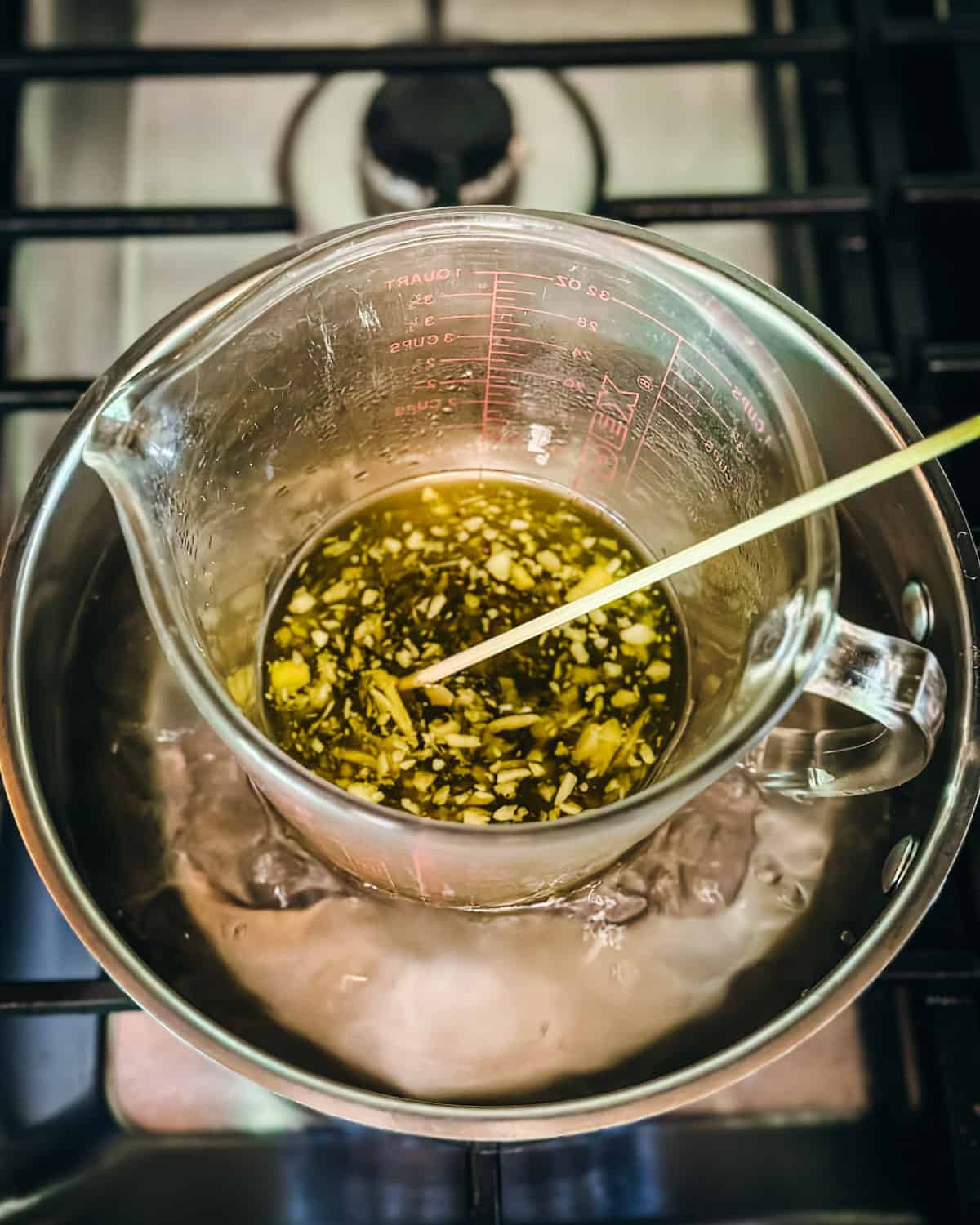
Remove the oil and beeswax mixture from the heat and continue stirring quickly until it completely melts.
Then pour the plantain salve mixture into tins or jars and let the salve set up for several hours.
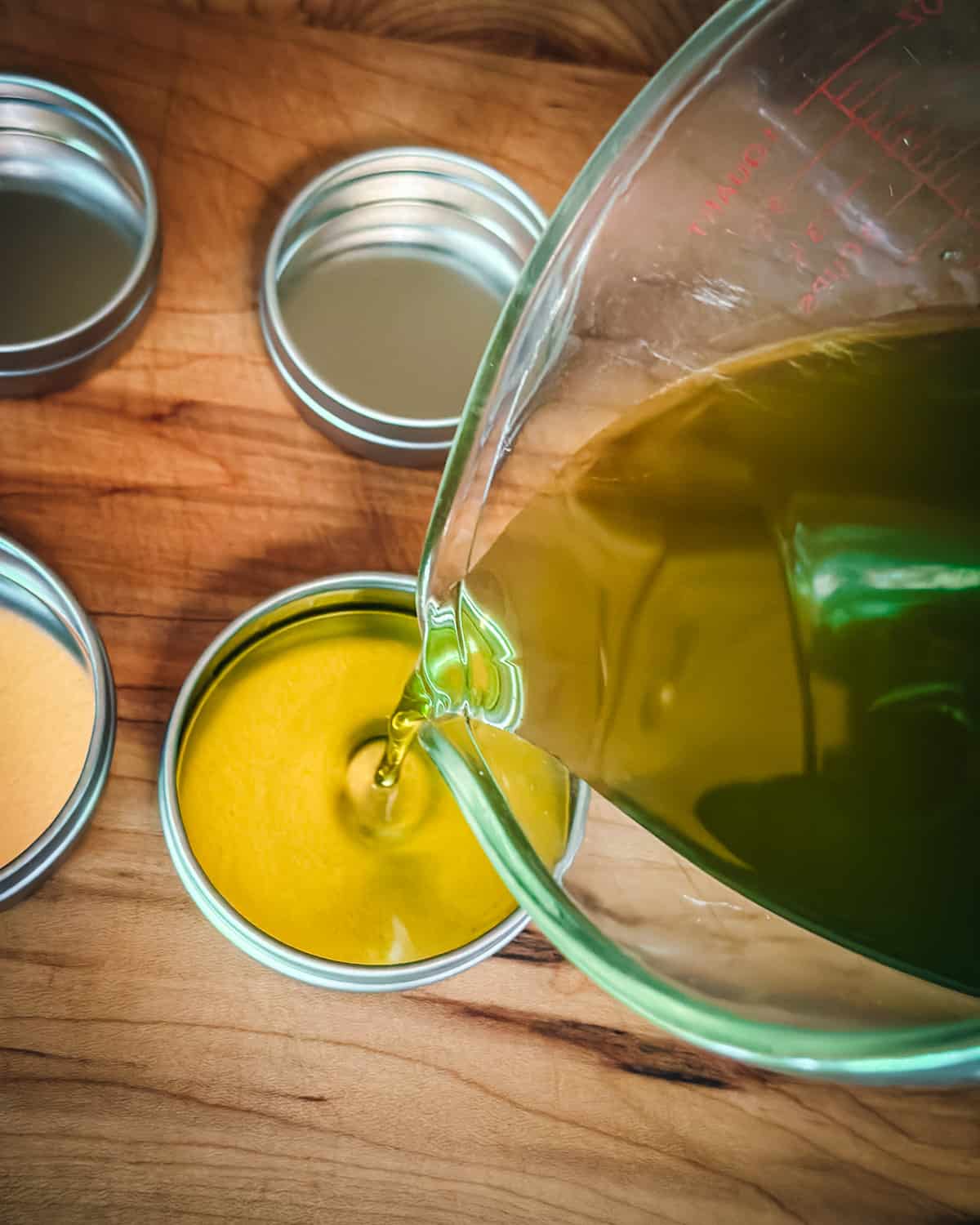
Wait until it is completely set and cooled before using this super soothing plantain herb salve!
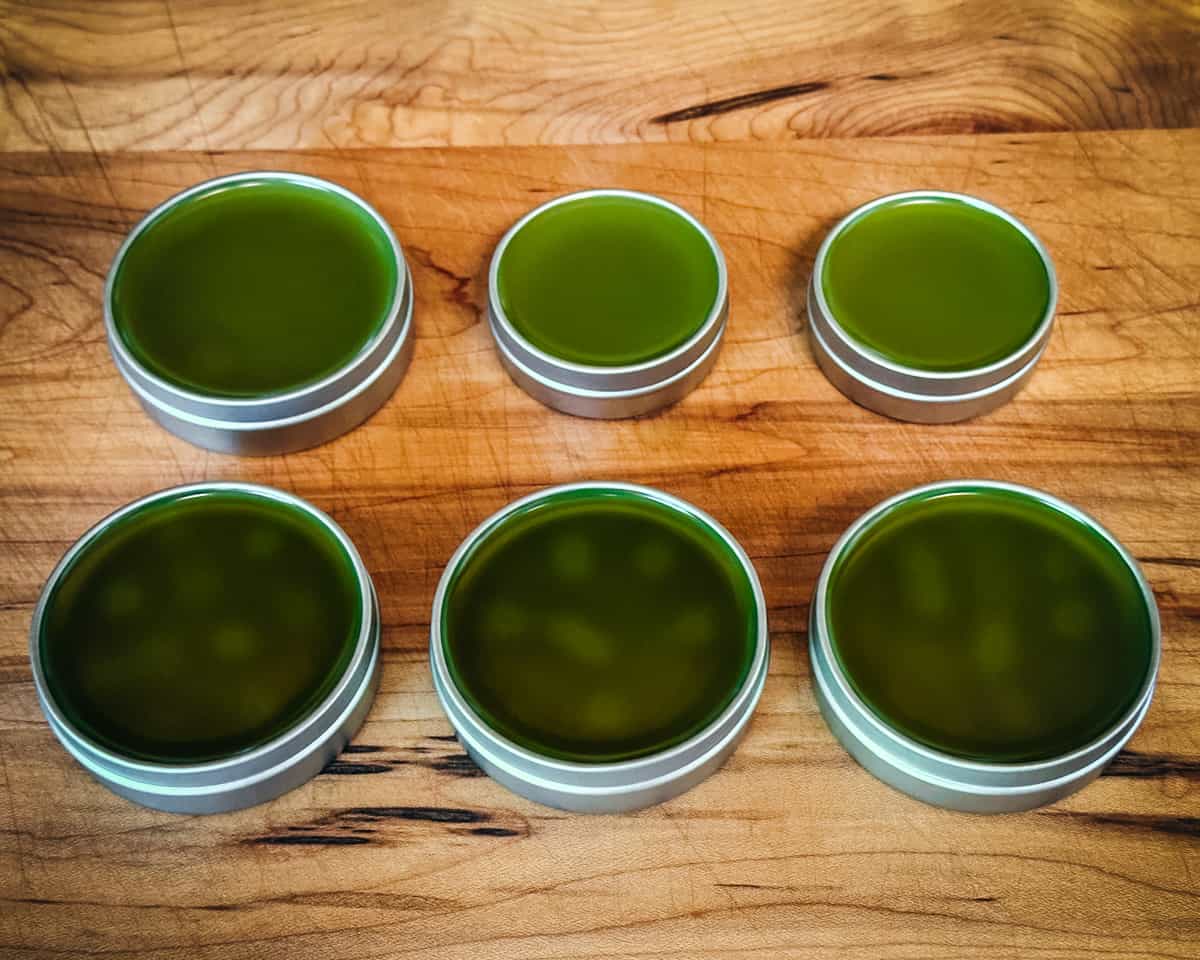
How to Use Plantain Salve
Plantain salve will work wonders on itchy bug bites, bee stings, rashes, and other itchy skin conditions. This is what plantain plant is best for!
This soothing herbal salve also has some healing qualities to it, so also works well on dry skin patches, and minor cuts and burns.
If you have an area of skin irritation or redness, especially if it’s itchy, put plantain salve to work and you’ll have so much relief!
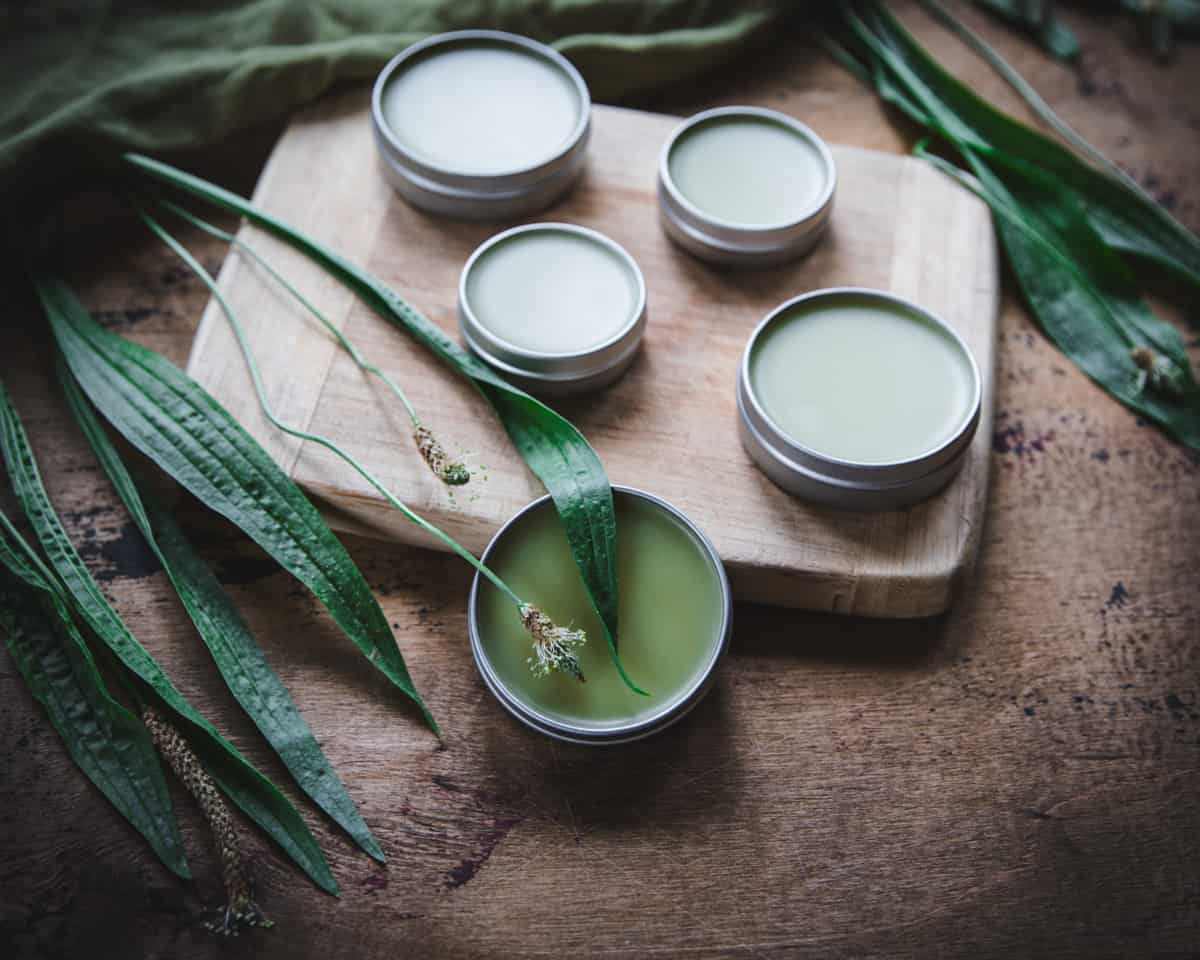
More Herbal Salve Recipes
- Homemade Calendula Salve
- How to Make a Yarrow Plant Salve
- Healing Comfrey Salve
- How to Make Dandelion Salve
- Homemade Lavender Salve
- Chickweed Salve for Dry Skin
- St. John’s Wort Salve
- Pine Salve
For even more salve recipes here are 10 salve recipes to make and use in your home skin care routine!
Homemade Plantain Salve
Equipment
Ingredients
Plantain Infused Oil
- 1 cup dried plantain leaves
- 1 1/2 cups carrier oil I like to use a blend of olive oil, melted coconut oil, and sweet almond oil
Plantain Salve
- 1 cup plantain infused oil
- 1 ounce beeswax
Instructions
Plantain Infused Oil
- Put the dried plantain leaves into a pint jar about halfway full. Then fill the jar with a carrier oil (or a blend of oils) of your choice.
- Cap the jar with a lid and let the oil infuse for 4-6 weeks (or more) in a cool spot out of direct sunlight.
- Once the plantain oil has infused, strain out the leaves from the oil with a fine mesh sieve lined with cheesecloth. Squeeze the remaining oil out of the leaves in the cheesecloth.
Plantain Salve
- Heat the plantain-infused oil in a double boiler on your stove. You can create a makeshift double boiler by putting a small bowl or a glass Pyrex measuring cup over a pot with about an inch of simmering water.
- Add the beeswax and stir occasionally (a wooden or bamboo skewer or chopstick works well for this) until the beeswax completely dissolves into the oil.
- Then remove the oil/beeswax mixture from the heat, stirring quickly and constantly until it melts.
- Pour the salve mixture into tins or jars.
- Let the salve set up for several hours or until it is completely cooled before using.
Notes
- This plantain salve recipe is easily adapted to smaller or larger batches. Simply double it for a larger batch or cut it in half for a smaller batch.
- Olive oil is a great choice as a carrier oil and is easy to find. I often use a blend of about 50% olive oil, 25% coconut oil, and 25% sweet almond oil. Each oil has its own benefits and it’s really up to you which one you’d like to use.
- You can alternatively use the quick method for making infused oils by heating the oil and dried flowers in a pot on low heat for up to 12 hours, but the infused oil may not be as potent.
- This salve will last for a year or more if kept in a dry place out of intense heat and sunlight.

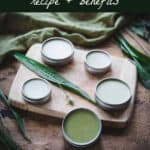
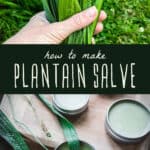
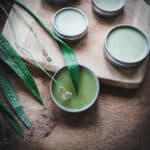

Thank you for this recipe which I have made and am using. It is excellent to relieve the itch of insect bites and also for those painful little cracks around thumbs and fingers. If used regularly, it prevents those cracks from forming.
If you want a scent in your salve, when would you put it in and are there certain scents that go with certain plants?
Hi Rachel. I would add the fragrance after melting the beeswax.
Is there any particular time in it’s growing to pick plantain? Ex: before it starts growing seeds, during or after?
If you’re eating it, then it’s best to gather in the spring while it’s young, but you can gather the leaves for herbal medicine at any time.
Are fresh leaves ok to use?
Hi Vanessa. Because you’re infusing them in oil, it’s best if they’re dried first so that they don’t leach too much moisture into your oil, causing it to mold.
how long can you keep plaintain and other herbs, etc. suspended in the oils? I have some from a year or more, are they still usable? Thank you
As long as there’s no mold, it should be fine, but it really depends on the herb and carrier oil. I would definitely strain the herb material out when you can. Typically infused oils will last a year or more.
Excellent. I make a Jewelweed salve for itchy skin and so much more. It has plantain in it along with Chamomile infused oil and much more. It is fantastic on any skin issue. I love it. It is much darker than yours though. It has shea butter and cocoa butter in it and the infused oils are made with organic olive oil. Thank you for all you put on your blog. I read most all of it.
You’re welcome!
Which species of Jewelweed Margie ?